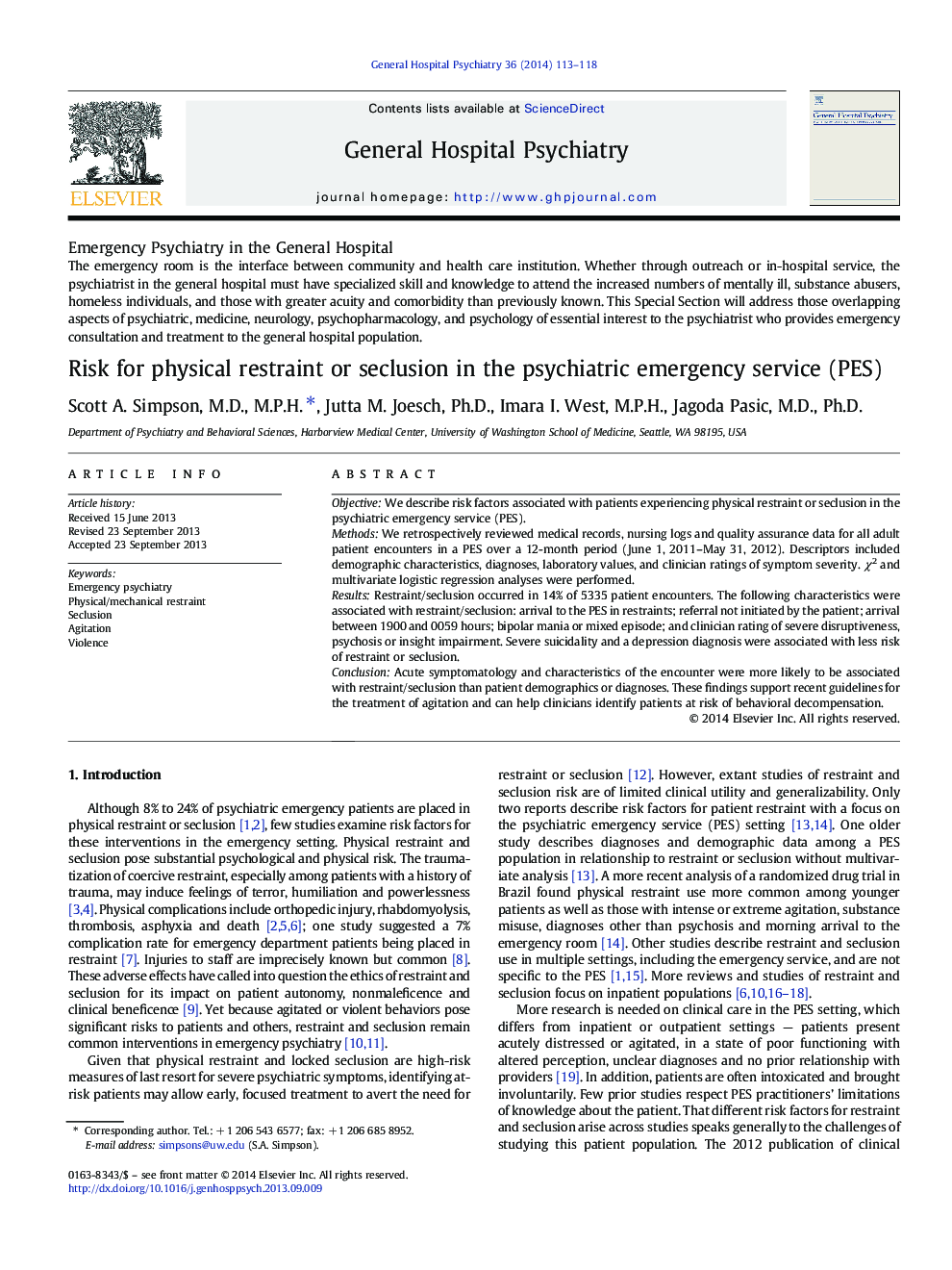| Article ID | Journal | Published Year | Pages | File Type |
|---|---|---|---|---|
| 6081968 | General Hospital Psychiatry | 2014 | 6 Pages |
ObjectiveWe describe risk factors associated with patients experiencing physical restraint or seclusion in the psychiatric emergency service (PES).MethodsWe retrospectively reviewed medical records, nursing logs and quality assurance data for all adult patient encounters in a PES over a 12-month period (June 1, 2011-May 31, 2012). Descriptors included demographic characteristics, diagnoses, laboratory values, and clinician ratings of symptom severity. Ï2 and multivariate logistic regression analyses were performed.ResultsRestraint/seclusion occurred in 14% of 5335 patient encounters. The following characteristics were associated with restraint/seclusion: arrival to the PES in restraints; referral not initiated by the patient; arrival between 1900 and 0059 hours; bipolar mania or mixed episode; and clinician rating of severe disruptiveness, psychosis or insight impairment. Severe suicidality and a depression diagnosis were associated with less risk of restraint or seclusion.ConclusionAcute symptomatology and characteristics of the encounter were more likely to be associated with restraint/seclusion than patient demographics or diagnoses. These findings support recent guidelines for the treatment of agitation and can help clinicians identify patients at risk of behavioral decompensation.
